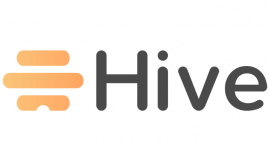Phishing is the leading threat exploiting COVID-19, followed by malicious websites, according to a survey of IT professionals from Check Point.
One of the favorite tactics employed by many cybercriminals is to take advantage of items in the news. The goal is to exploit the curiosity, interest, and anxiety that people feel about global crises and issues. That’s certainly true of the coronavirus, which has triggered a rise in cyberattacks designed to ensnare individuals looking for information and help on the outbreak.
SEE: Coronavirus: Critical IT policies and tools every business needs (TechRepublic Premium)
Among the 411 IT and security professionals surveyed by Check Point and Dimensional Research, 71% said they’ve seen an increase in security threats or attacks since the start of the COVID-19 outbreak. Looking at the top threats, 55% pointed to phishing attacks, while 32% cited malicious websites that claim to offer information or advice about the virus. IT pros have also seen a jump in malware and ransomware attacks since the disease began to surface early this year.
The surge in cyberattacks alone would be enough to tax the jobs of IT professionals. But the outbreak has also led to a dramatic increase in remote workers, all of whom IT staffers now have to support and secure.
Among the respondents, 95% acknowledged that they’re facing additional security challenges due to the spread of COVID-19. Some 56% pointed to the task of securing remote access as the top challenge, 55% mentioned the need for remote access scalable solutions, and 47% pointed to remote workers finding and using untested tools and services.
“Cybercriminals will always seek to capitalize on the latest trends to try and boost the success rates of attacks, and the coronavirus pandemic has created a perfect storm of a global news event together with dramatic changes in working practices and the technologies used by organizations,” Rafi Kretchmer, head of product marketing for Check Point, said in a press release. “This has meant a significant increase in the attack surface of many organizations, which is compromising their security postures.”
Looking ahead, 61% of the respondents are worried about the need to make quick adjustments as the circumstances change, 55% are concerned about the need for better remote access security, and 49% are alarmed about the need to ramp up security remotely.
Despite the added pressure and stress, IT pros still need to focus on security to make sure organizations and employees are protected from the latest threats.
“To ensure security and business continuity in this rapidly evolving situation, organizations need to protect themselves with a holistic, end-to-end security architecture,” Kretchmer advised. “This means ensuring accessible and reliable connections between corporate networks and remote devices 24/7; promoting collaboration and productivity between teams, networks, and offices; and deploying robust protection against advanced threats and cybercrime techniques at all points on the enterprise network fabric.”
Further, Check Point offers the following reminders for IT professionals:
- Secure your remote workers. Take a practical approach to secure your remote workers by installing VPN software and endpoint threat prevention.
- Educate employees on phishing emails. Teach your employees about the risks of spam and phishing emails.
- Learn to identify fake websites. Be aware of misspellings in URLs and better understand how fake websites are used to lure people into sharing their precious information.
Also see

Image: Getty Images/iStockphoto
Source of Article




